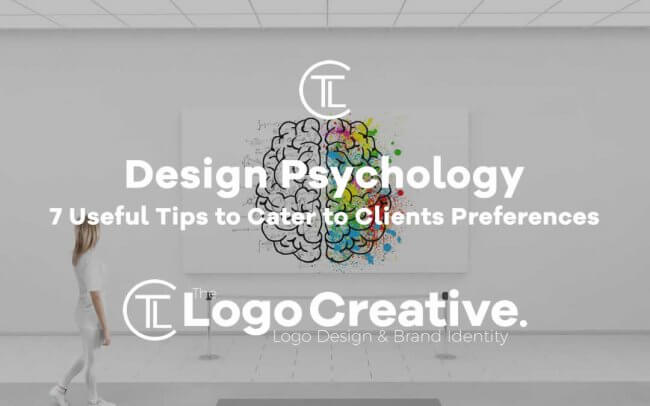Graphic design has become one of the most important marketing tools of today. The success of it depends greatly on the audience and how people respond to it. With that in mind, we can say with certainty that graphic design is more than an investment in time or money – it is a personalized approach that focuses on the audience.
To create a design that stands out and meets the eye of the person looking at it, you need to look at and study design psychology. The preferences of the clients are the key to success and these seven tips will help you get it right.
Table of Contents
1. Choose the Right Colors
Visual cues and colours have a huge impact on the user experience. A colour scheme or even a small bar on the top of a website can make a huge difference in terms of conversion rates. Seeing that any audience you will ever have has a limited attention span, you can expect them to power through websites and digest the information at a single glance. That short glance matters and the colour is a huge part of it.
When it comes to design, colour isn’t just about aesthetics. People have their fair share of preferences, so finding the exact combination that impresses each client is impossible. But, finding some commonly acceptable colours with the help of the colour theory is a safe way to create an acceptable web design. It’s the reality – some colours work great when put together.
It isn’t just about the combination – it is about proper colour use, too. Different colours create different feelings. According to research, people make a subconscious judgment about a brand or product within a minute and a half of their first viewing, and 90% of this assessment is based on colour use.
Here are some short tips to use when choosing the colours for your design:
- Pure colours are not mixed with other colours or hues and should be used for bright designs, preferably something energetic, summery, youthful, or
- Shades are pure colours mixed with black. They are best when used for something dark, evil, dangerous or mysterious. A good idea is to combine them with pure colours or light shades in gradients.
- Tints are pure colours mixed with white, so they are lighter and more peaceful. The most popular usage of tints can be seen in feminine websites or something in the beauty and health industry.
In addition to combinations, one other thing to consider in terms of colour usage is their meaning. Yes, colours have meaning. They have social connotations and emotional connotations. Very often, they also have cultural connotations.
For example, shades and tints influence people’s feelings. Dark blue can convey integrity or security, while light blue can convey peace and calmness.
Some colours even have their own branding, a connotation developed over time just because some popular brands have used it. Countries have their own colour brands like Ireland has a green colour.
So, what can you do when it comes to colour choice? In addition to the choice of colour hue, colour compatibility and meaning, you need to also consider brightness and contrast.
There is one common tip that applies to any graphic design and use of colours – simplicity. Using too many colours can remove the focus or overwhelm the visitor, and no one wants this, do they?
2. Think Gender
The aim of this isn’t to discriminate genders, but to find the preferences based on it. Gender is an important element to consider when creating graphic design, especially since most brands aim toward a more focused audience – male or female.
Perhaps your design is viewed by an equal portion of women and men, but if you sell, let’s say, feminine products – your goal is to appeal to the female audience. Focusing on the target audience might be the smartest thing you can do for your design and luckily, some gender preferences can truly help out with this.
Genders are known to respond differently to colour use. For example, it is believed that yellow is more effective when presented to men than to women, while some believe that blue stands better when used for men than for women. A study by Jastrow found that men prefer blue to red, while women prefer red to blue.
It might not be all about gender preferences as much as social behaviours since society often splits colours between men and women – blue for baby boy and pink for a baby girl.
And it doesn’t just end with colour choices. Different genders are also known to prefer hues. For example, McInnis and Shearer believe that 76% of women prefer cool colours, while only 56% of men share the same opinion. On the other side, only 45% of the women chose bright colours, compared to a percentage of 51% for the men.
So, if you do have a target gender for your products in mind, you might want to learn a thing or two about gender preferences.
3. Know the Niche
A design serves its own purpose – to attract the right audience and provide them with what they need. To do this, you need to know your niche when you create the design. Do not move far from the path you have set. Knowing more about the niche gives you all the information you need about your target audience and their preferences and with it, it gives you the tools you need to boost your design’s success.
So, before you get into creating a design for a client, learn as much as you can about the niche your design will work its magic into. Research the competition and check out their designs. If you look at the popular ones, you’ll get an idea about what works. Ideally, that’s what your client needs.
4. Opt for Accessibility
As you are creating a website design, opt for accessibility. People don’t have hours to spend trying to find their way around your design, and they might not share the same vision and patience as you.
Colours are just a part of this equation. Focus on font size and type, the organization of content and multimedia, calls for actions, headlines, and all other features that can impact the design’s accessibility.
5. Provide Relevance
In addition to accessibility and appearance, you must also provide relevance. Don’t just focus on the aesthetics – relevance to products is what turns visitors into leads.
When people come to see your design, they are looking for something. If your design does not provide any relevance or provide them with the results they seek, they will go away.
This means adding emphasis, bullet points, calls to action, links to relevant data and resources, etc. It includes everything that captures the visitor’s attention, starting from colours to CTAs.
6. Include the Key Website Elements into Your Design
If we start listing the important website principles, the list would have no end. There is literally no limitation as to what you can include on your website. However, some things are essential for the appearance of your design. use Web Design Thinking as part of your web design strategy Some of these elements are:
- Links
People love to be given an opportunity to get more information. Whether you link to your website or another one, your design must draw attention to the links and give them a chance to stand out and be noticed. You are left to choose how to do this, whether it is by changing font size, highlighting, or using different colours.
- Navigation
Design elements should bring attention to the navigation. People need to be able to move around right away when they feel like it, and your design should provide them with ease of navigation instantly.
- Buttons
Design elements like colours and highlighters, as well as images or symbols, are some of the most popular choices for a call to action. After all, that’s everyone’s goal – to make the viewer take action.
- Headings and bullet points
Your design should illuminate and highlight the most important, which includes headings and list items. For this purpose, you can use colours, bullet points, larger font sizes, different formatting, etc.
7. Complement the Brand’s Personality
The brand personality and identity are the basis of the graphic design. To make a brand recognizable and attractive to the viewer, your design must focus on complementing that personality. People want to connect with other things and the right approaches toward branding can help you master the design psychology.
Decide what you want to convey and go with it. Your decision will be based on the target audience and big data you’ve gathered in terms of their user experience. Once you have all this for your design, find a way to complement the brand by using the right combinations and styles.
Meeting the needs of a client when creating your website design can be rather challenging, but this list should help you master the process and create an excellent design.
 Author Bio
Author Bio
Jennifer Sanders has been working as an editor and a copywriter at an essaygeeks in London for 3 years. She is also a professional content writer and journalist in such topics as inspiration, productivity, education, and technologies.

